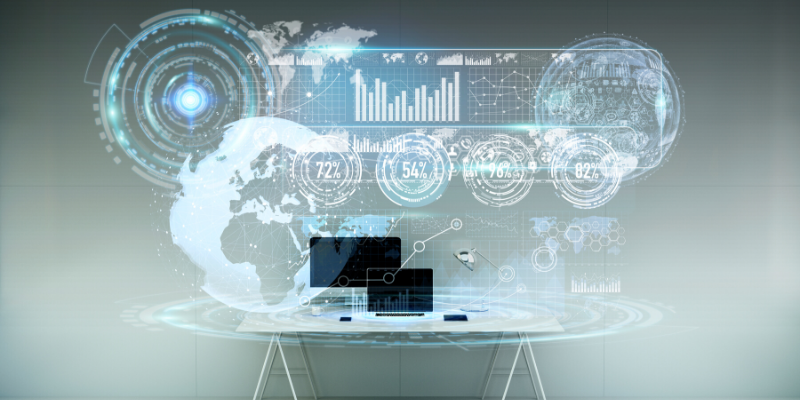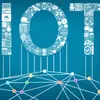Are digitally-driven workspaces the new normal?
Perhaps the COVID-19 crisis is a wakeup call as it has enabled businesses to align to the next normal, without compromising on overall business objectives and customer experience.

Digital transformation of workspaces is a revolution whose time is here. Not surprisingly, it took a crisis like a pandemic to accelerate this transformation.
Statistical data reveals that in the recent past, consumers have progressively shifted preferences to working with service providers who offer more digitised business solutions with lesser efforts. Instead of relying on a single source to meet their requirements, the average consumer of the 21st century leverages multiple channels like mobile apps, online shopping, chatbots, and social media.
Even the simple email channel seems to be finding preference over the exertions of physically travelling or calling a service centre to find assistance.
Despite this shift, enterprises across several verticals have been restrained about adopting comprehensive, 360-degree digital solutions. Up until now, the typical business system relied heavily on physical infrastructure. But then, as the coronavirus continues to ricochet across nations, businesses have been forced to rapidly switch to remote workspaces that are primarily powered by digital solutions. It wouldn’t be far-fetched to conclude that COVID-19 is the catalyst that has driven us toward this long-due transformation.
Learnings from the Lockdown
To give credit where it’s due, several businesses had taken notable steps toward digital transformation even before this crisis came knocking.
In fact, in a 2018 Tech Pro Research survey, 70% of the respondents revealed that their companies either had a digital transformation strategy in place or were working on one. However, in spite of schemes and policies, several organisations took a little while to align themselves to work under the lockdown and social distancing guidelines. Offices closed at short notice and work-from-home became an overnight protocol for a significant segment of the workforce.
There have been hiccups for sure — employees are finding it challenging to remain connected due to insufficient internet connectivity or team leaders are finding it tough to monitor productivity, and with dashboard access practically unavailable, dashboard-based reporting is no longer reliable. Accessing corporate applications through firewalls can lead to access and last-mile slowness. Above all, customer SLAs have become harder to manage and honor.
These current challenges are good opportunities for ensuring the future corporate service mindset is one that enables us to make the transition from where we were to where we ought to be in a seamless manner. By continuing to digitize the physical and humanize the digital, businesses can bridge this gap successfully.
The Making of the New Normal
The drawbacks of the current work environments can be rectified by adopting digital solutions in place of physical ones wherever feasible. Holistic digital transformation could give us paperless, presenceless offices built with efficiencies.
New-age technology like Artificial Intelligence (AI), Robotic Process Automation (RPA), and Optical Character Recognition (OCR) will evidently be at the heart of the new normal. And with unencumbered process controls and fewer hierarchical restrictions, policy-making could become faster and more capable of keeping up with the changing needs of dynamic business that wish to expand their presence despite the present limitations.
Extensive digitisation will also mean lighter and more intuitive office applications that respond promptly, minimising lags. A greater reliance on interactive tools like BOTs, WhatsApp, and video-based technological solutions could also point to reduced physical effort coupled with greater and more effective customer interaction. In fact, the future of customer experience in the new normal looks particularly promising.
Customer delight in the post-COVID-19 era
The coronavirus crisis has spurred businesses across industries to elevate the kind of customer experience they offer. In the post-COVID-19 era, this transformation will need to continue. Brick and mortar stores may begin to look very different when we emerge on the other side of this crisis. Focus will be on the three-fold mantra of informing, educating and encouraging customers to migrate to digital channels early on and to ensure customer effort and experience only continue to improve.
Deployment of virtual assistants is another essential aspect of reimagining customer experience in the post-crisis world. Empower your chatbots with machine learning to initiate a conversation correctly and employ natural language processing (NLP) technology to steer the conversation rationally. Most importantly, you need to leverage the power of analytically-driven AI to improve the BOT’s performance over time, so your CX can be streamlined.
Accelerate digital delivery of services to the maximum possible extent and shift focus to virtual customer engagement. Above all, open your business up to the prospect of handing out more power to the end user.
The digital solutions that companies implement during these coming weeks are not temporary measures. They are the building blocks of what will be the new normal and will enable businesses leapfrog into more enhanced customer experience strategies that are backed by robust tech support, and digital tools.
Perhaps the COVID-19 crisis was the wakeup call we needed. It has definitely enabled businesses to align to what will be not just the new normal but the next normal. It will gear them up accordingly, without compromising on overall business objectives and customer experience, but ensuring they are also one step ahead of the rest of the pack.
(Edited by Apoorva Puranik)
(Disclaimer: The views and opinions expressed in this article are those of the author and do not necessarily reflect the views of YourStory.)










![[Funding alert] Electric vehicle startup Rivian raises additional $2.5B from investment firm T Rowe Price](https://images.yourstory.com/cs/2/b87effd06a6611e9ad333f8a4777438f/funding2-1587642295383.png)

